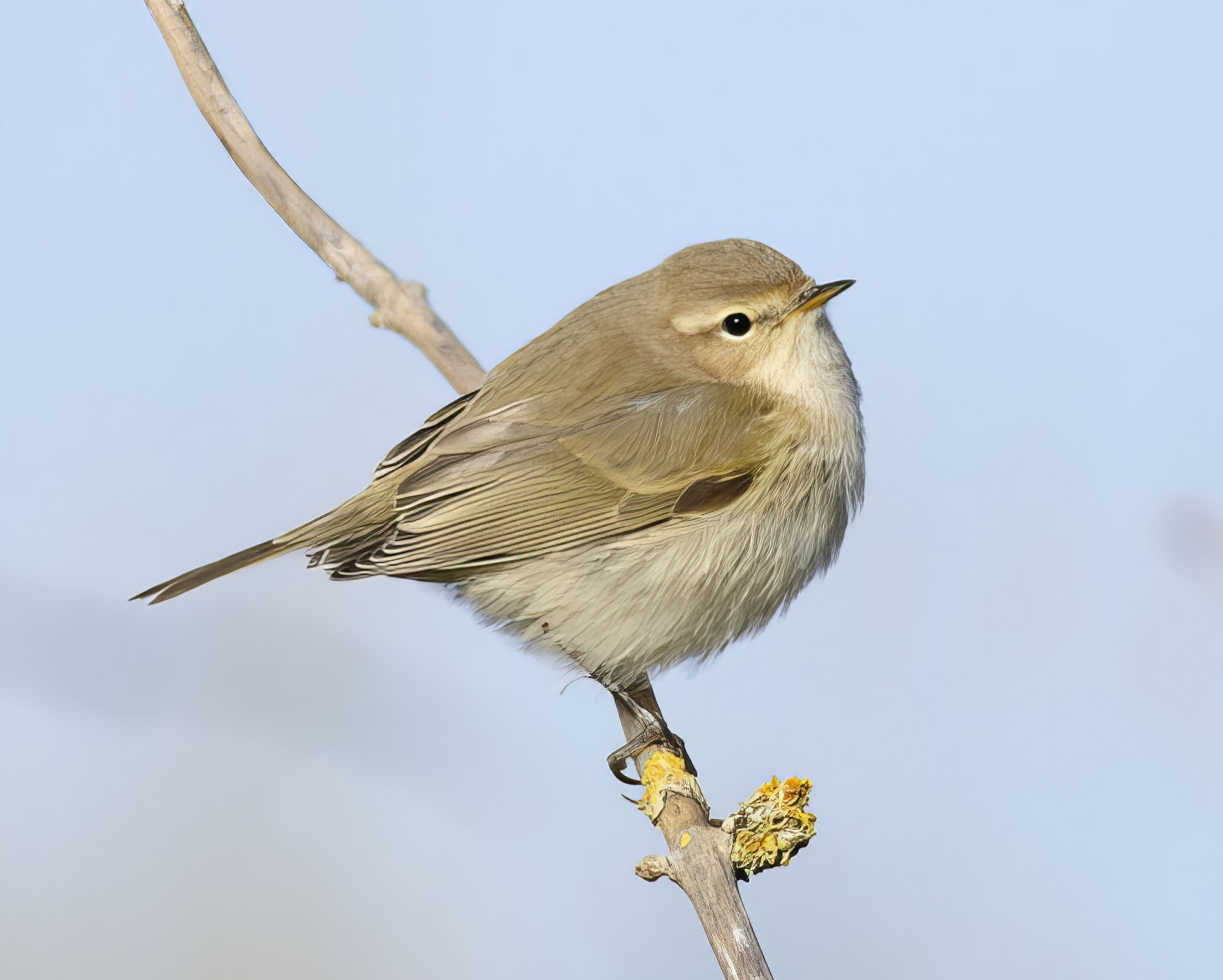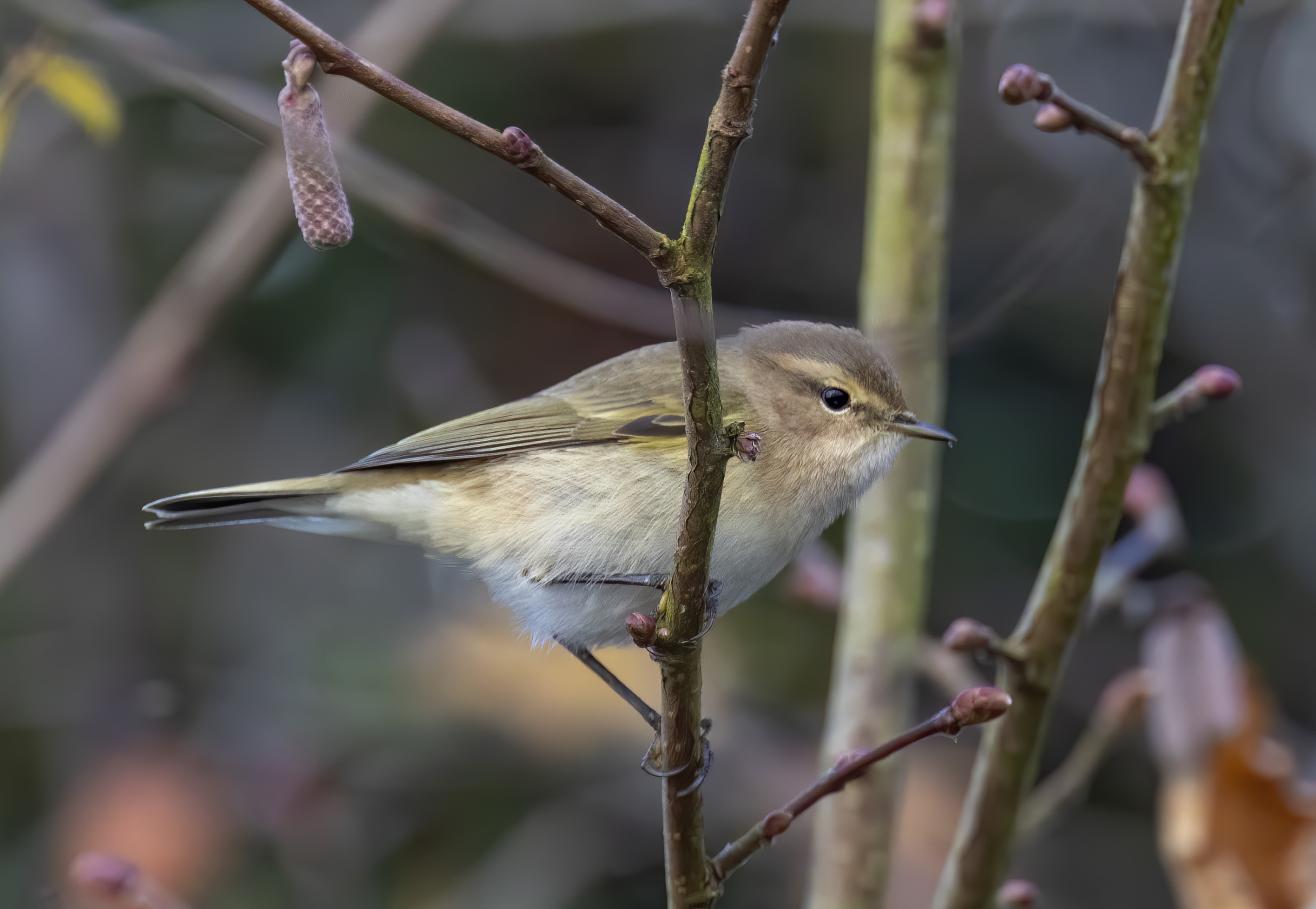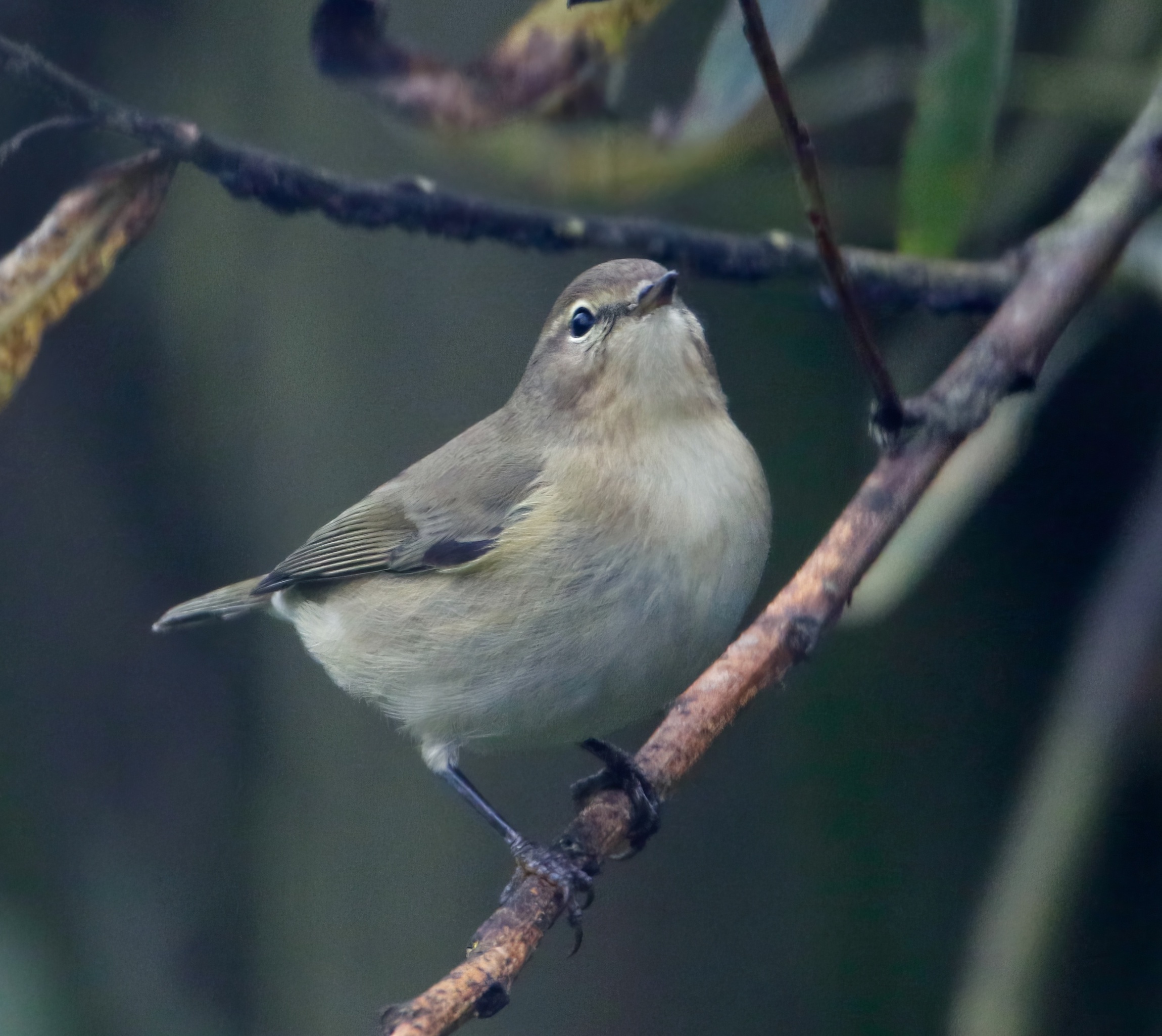Siberian Chiffchaff Phylloscopus collybita tristis
Rare passage migrant in autumn, few over-winter.



Siberian Chiffchaffs: left, at Donna Nook October 10th 2013 and centre, Alkborough January 2016 (Graham Catley); right, at Saltfleetby October 2016 (Michael Tarrant).
Lorand and Atkin (1989) reported no records of P.c. tristis but hinted that some associated with late autumn arrivals of Asiatic migrants in recent years have shown characteristics of this Siberian race. Plumage is variable, the main reason that this subspecies has been overlooked or perhaps ignored as ‘just a variant’ in the past. Adults are grey-brown above with green tones restricted to edges of remiges and rectrices (in fresh plumage, may have olive tinge on lower back, scapulars and rump); show a narrow supercilium and buffish-white eye ring (lacking yellow) and thin blackish eyestripe; ear-coverts and neck-sides buffish; chin and upper throat white, lower throat and underparts white or buffish white, most strongly buff on throat and breast, with flanks sometimes buffish-tinged; yellow on underwing-coverts (frequently show as bright yellow feathers at bend of wing). Some individuals are greyish-brown tinged olive above and have yellowish or yellow-streaked on underparts. These individuals were previously thought to represent a different race (“fulvescens”) but have since been synonymised with tristis.
Valid records of tristis have been reported in the county from 1980 onwards with between one and 10 records per year, mostly in October-December and at coastal sites but also from inland sites such as Marston STW. In the five years 2018-2022 there were around 21 records, notwithstanding the issue of duplication across and between adjacent sites, averaging about four per year. A few remain into March and early April, and there was a notable record of a singing male at Goxhill Marsh, March 11th-23rd 1989. Graham Catley (2000) stated he was attracted to the bird because of its unusual song as follows:
I described this as a mix of ‘chiff’notes given with a delivery recalling the song of Willow Warbler P. trochilus, which I noted as ‘chueet to tweet tweet’. Its regularly repeated call-note was a rather weak ‘cheesp’or ‘cheeup’.
Addendum: Phylloscopus collybita abietinus
This race is found in Scandinavia and NW Russia to the Black Sea, e Turkey and Syria. Lorand and Atkin (1989) recorded no records of it and since then Shipilina et al (2017) showed that there is a tristis/abietinus zone of hybridisation in Russia. Although abietinus averages paler than collybita most cannot be identified on plumage alone. Such intergrades might explain those Siberian Chiffchaff candidates which show lots more green and yellow in the plumage than ‘traditional’ tristis and have mixed call types. Annual claims of abietinus in the 1980s and 1990s cannot be considered to be sound in the light of this and there have been no claims of abietinus since then.
Reference
Catley, G. P. (200). Song and call of a 'Siberian Chiffchaff. British Birds 93(9): 456.
Shipilina, D., Serbyn, M,. Ivanitskii, V., and Marova, I. and Backström, N. (2017). Patterns of genetic, phenotypic, and acoustic variation across a chiffchaff (Phylloscopus collybita abietinus/tristis) hybrid zone. Ecol. Evol. 7:2169-2180.
(Account as per new Birds of Lincolnshire (2021), included October 2022)

